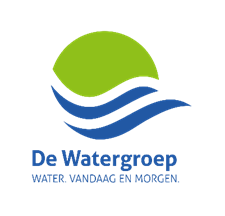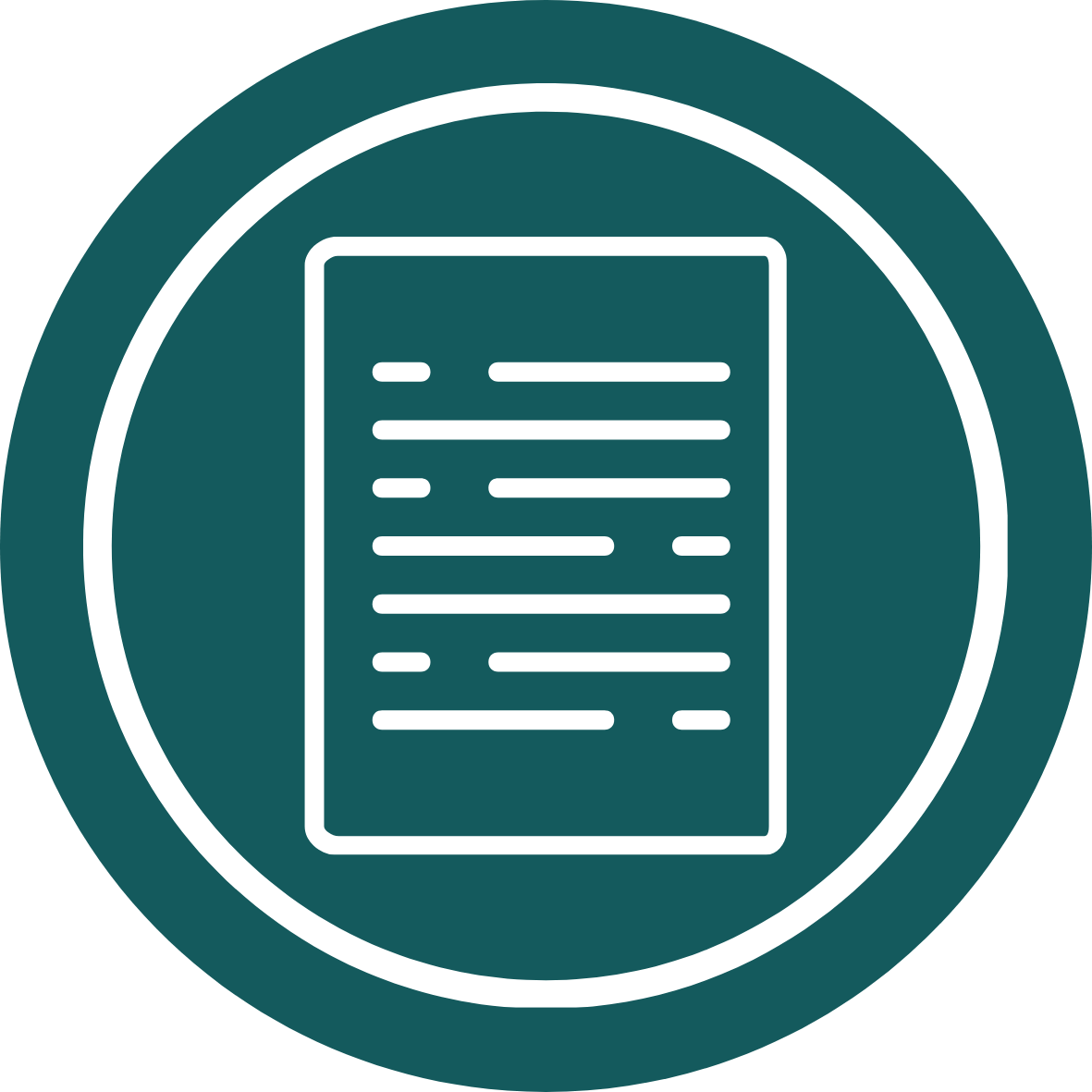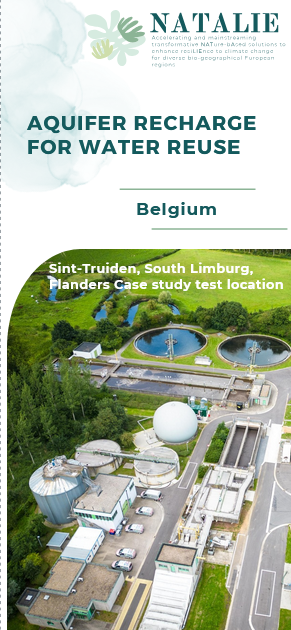CS#5 - Aquifer recharge for water reuse in Belgium
This page is also available in Dutch
DS#5 - "Blue Horizon Limburg" (Belgium)

The case study in 5 minutes
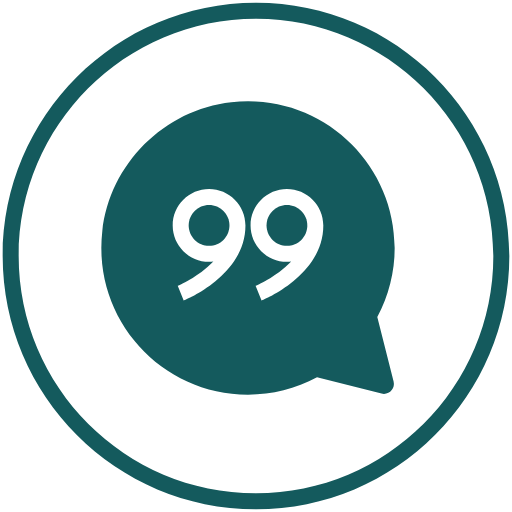
Quote


Location
The demonstration site Blue Horizon Limburg is located in Flanders, Belgium.

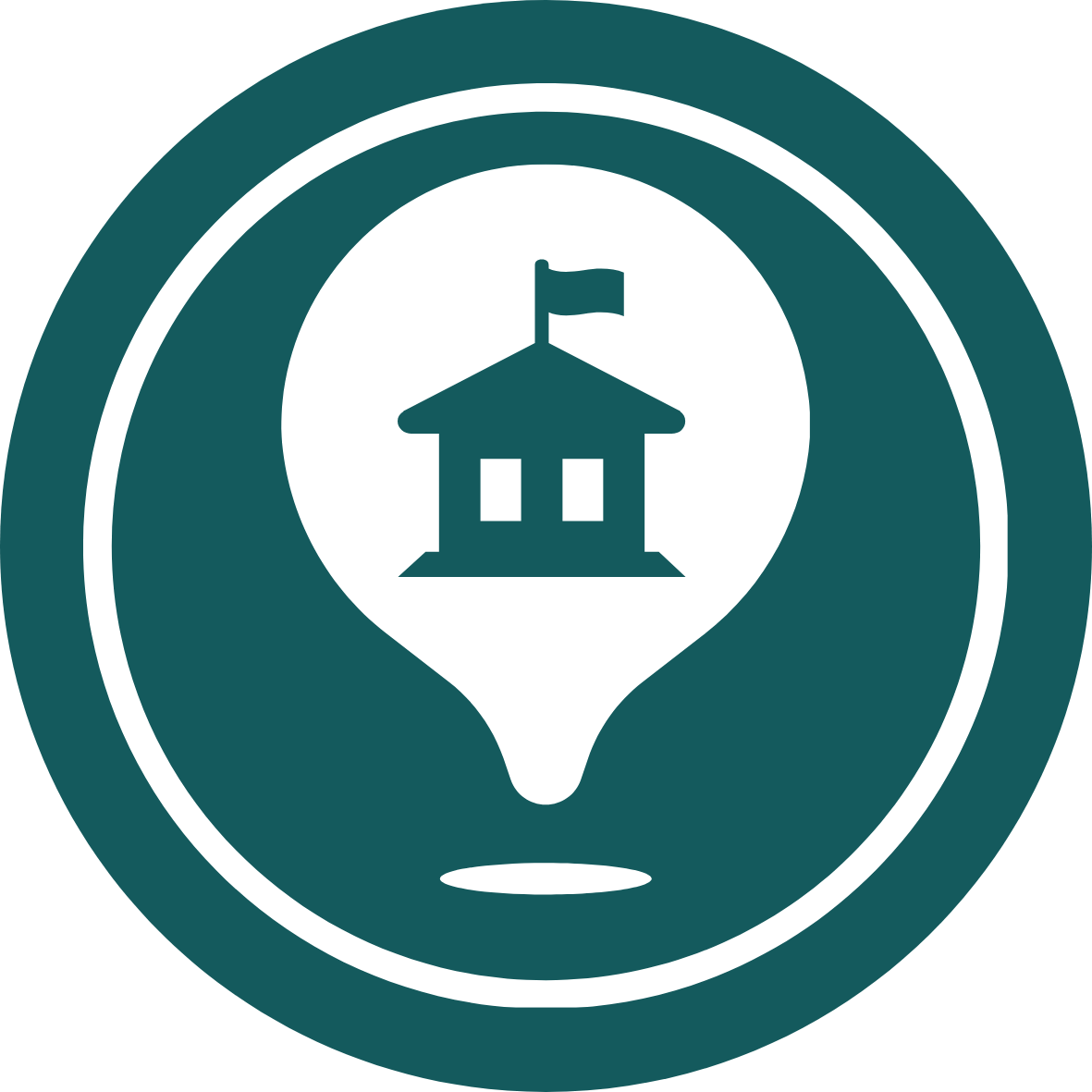
Description of the area
-
Biogeographical region: Atlantic
-
Landscape context: Urban agglomerations interspersed with rural zones
-
Area coverage: ~2 427 km²
-
Water supply: Groundwater is the main source of water for South Limburg (Mid-East region)
-
Hydrology: Drained by two river systems (Meuse/Maas and Schelde)

Climatic Challenges

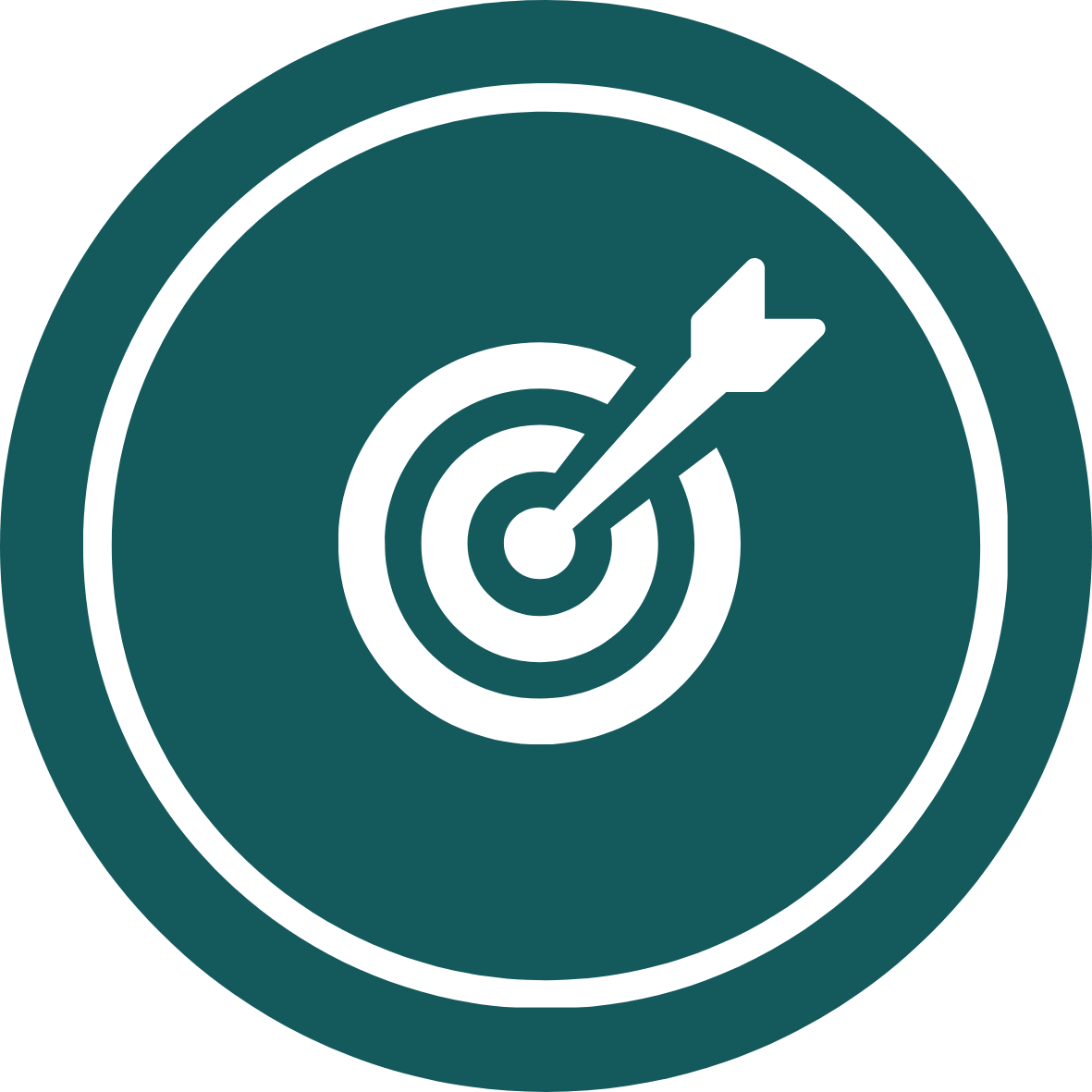
Planned activities
The use of alternative water sources (e.g. WWTP effluent, industrial process water) can complement groundwater as a source of drinking water. In urbanised areas, some of this surface water is discharged effluent from WWTPs. The indirect use of effluent from surface water is thus already a reality in many urbanised locations. For example, it has been estimated that globally about 65% of the irrigation water is already impacted by urban wastewater flows.
Applications of designed wastewater reuse for drinking water are also already available today (e.g. Torreele, Belgium), although these are exceptional. Using municipal wastewater effluent has advantages. For instance, its composition and flow rate are fairly constant, making design and operation of treatment easier. In addition, it is a secure source, less dependent on weather conditions for minimum flows. In the context of circular thinking, this also contributes to retaining water in the water system, thus reducing pressure on external sources.
The treatment objectives regarding the use of alternative water sources are similar or more challenging than surface water, with specific challenges towards microbial safety, chemical safety and salt load. However, the current state of treatment technology makes it possible to address these challenges to achieve drinking water quality in a direct or indirect way.

Progress
The focus in the first year was on the preparation and planning of our case study. As an essential first step, a three-dimensional MODFLOW model was developed to assess the storage and transfer potential of the Cretaceous chalk aquifer. This model tested a range of injection and extraction scenarios, with rates varying between 10 m³/h and 100 m³/h, and explored different configurations of the ASR well field. The modelling work also considered the uncertainties in aquifer properties, providing valuable input for the design and setup of the pilot system.
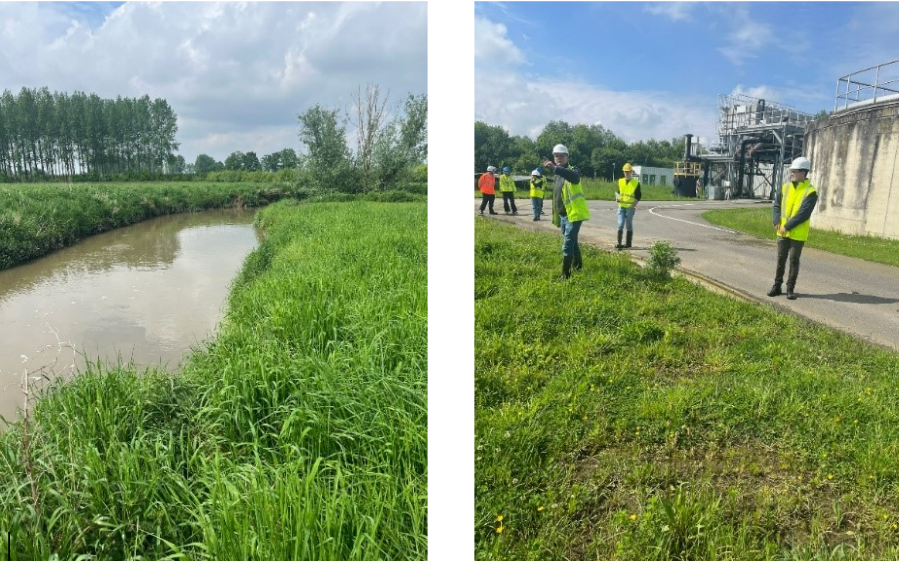
Building on these insights, a comprehensive pilot test plan was formulated. This involved a series of meetings to discuss and evaluate the feasibility of various well field designs and pilot configurations. The pilot is structured into different stages, each targeting specific tasks aligned with the research objectives.


Ambition
Ambition during the project
Obtain a better idea of the feasibility of ASR for drinking water supply and/or replenishment of groundwater reserve. Gaining initial experience with the possibilities but also complexities around indirect reuse, preferentially starting from an alternative water source
Ambition after the project
If the implementation of the ASR is successful, the intention is to implement the technology at large scale (100 m3/h). Moreover, there is a replication potential at other sites.

Questions
Ever wondered how nature can help us tackle climate change? NBS are “Solutions inspired and supported by nature, which are cost-effective, simultaneously provide environmental, social and economic benefits and help build resilience.” European Commission, 2015.
An aquifer is an underground layer of porous rock or sediment that holds groundwater. It is a vital source of freshwater for many regions, but there are challenges such as over-exploitation, declining groundwater levels, or pollution (mainly from agricultural nutrients or pesticides).
Wastewater is never injected directly into the aquifer, since this is a pristine layer. In this case study, raw groundwater and RO water (simulating purified reuse water) are injected into the Cretaceous layer. The potential of the Cretaceous aquifer to accept and transport such water qualities is investigated.
The idea is that the injected water will remain in the aquifer for a certain period of time before being pumped out again for reuse. The water will be conditioned to raw groundwater quality. This quality is ideal to produce drinking water after normal treatment.

Gallery

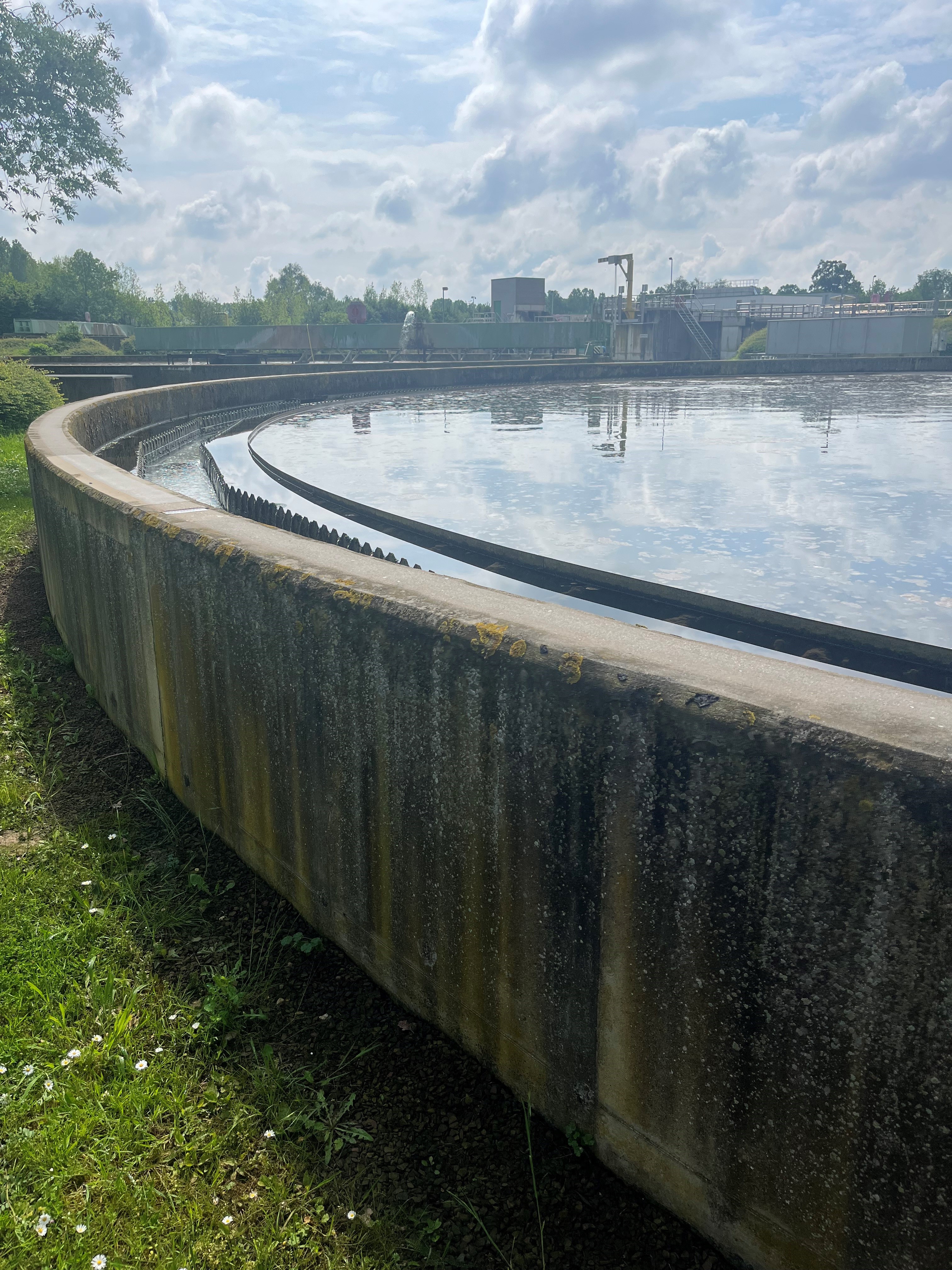
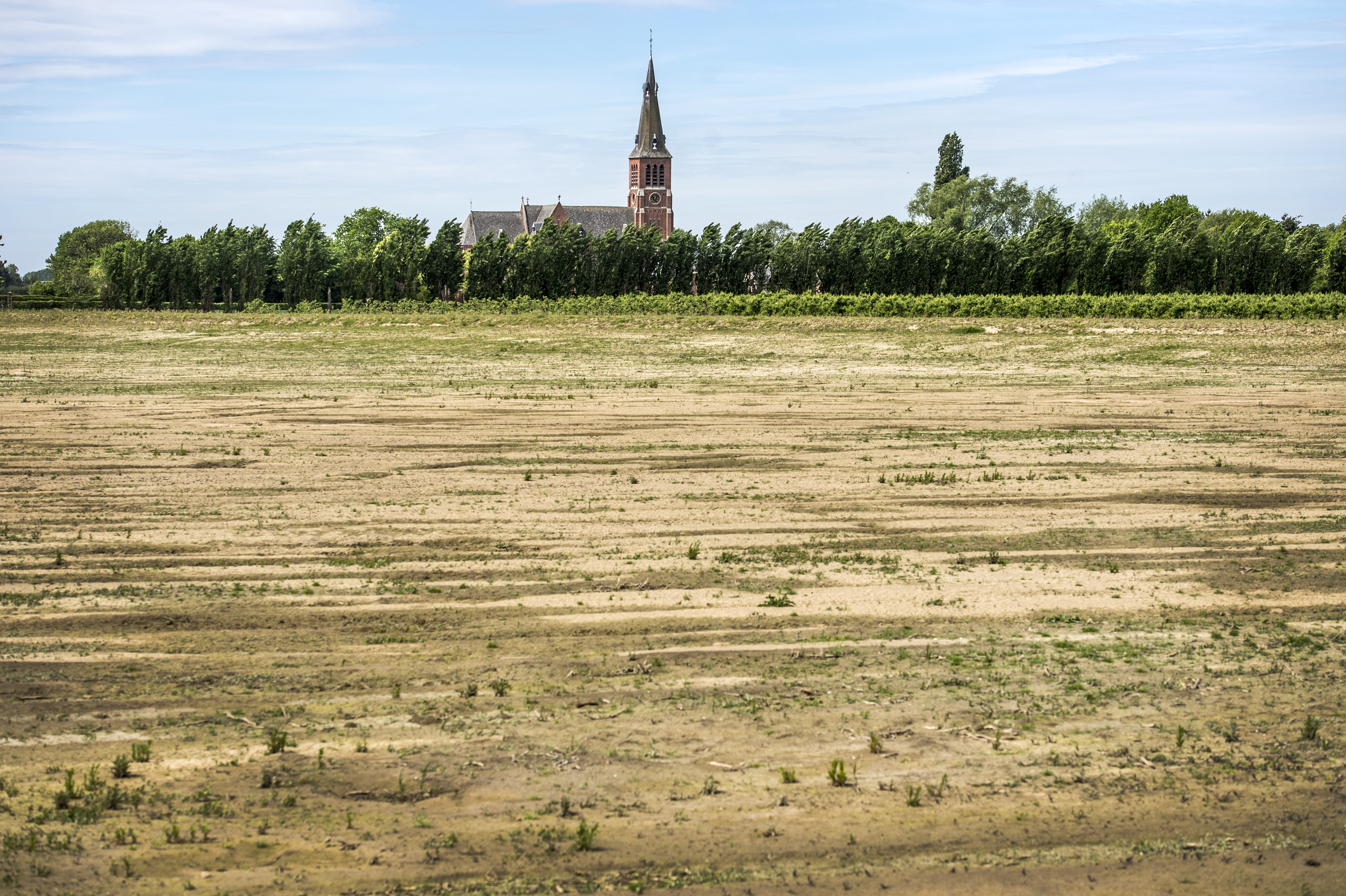
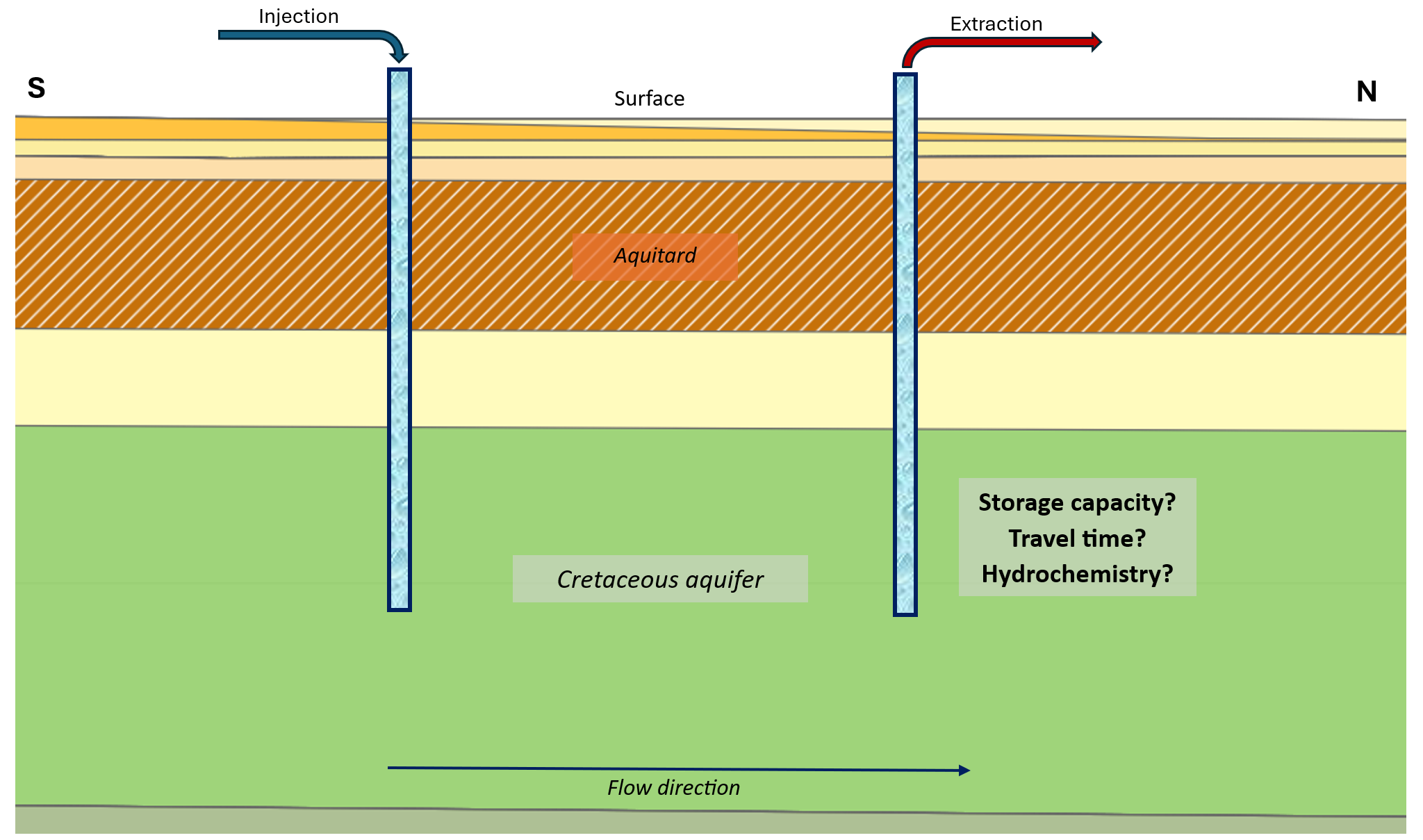
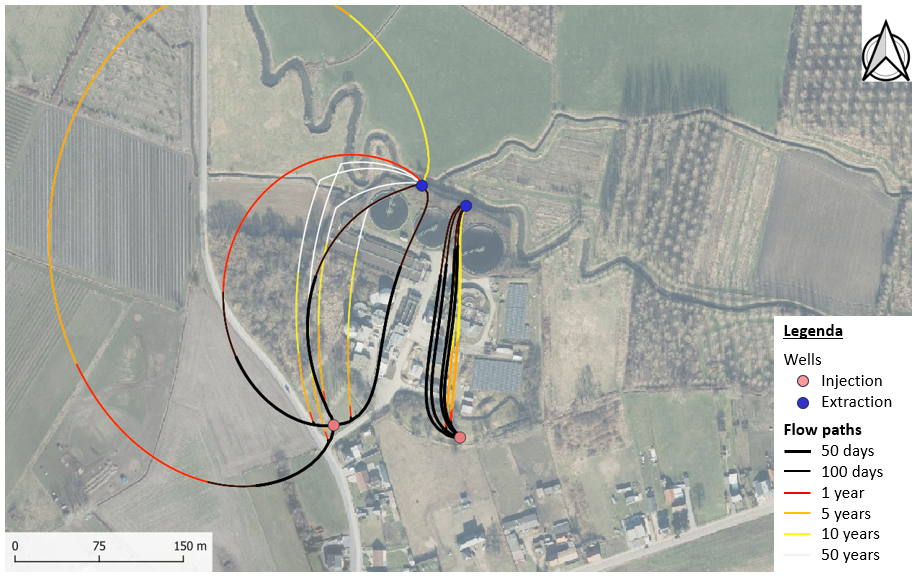

Involved partners
